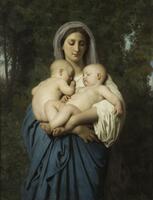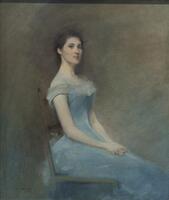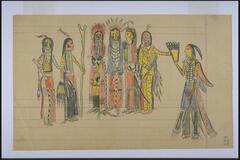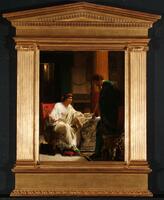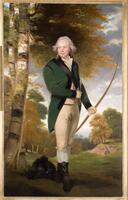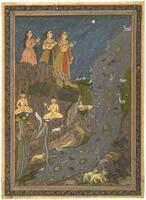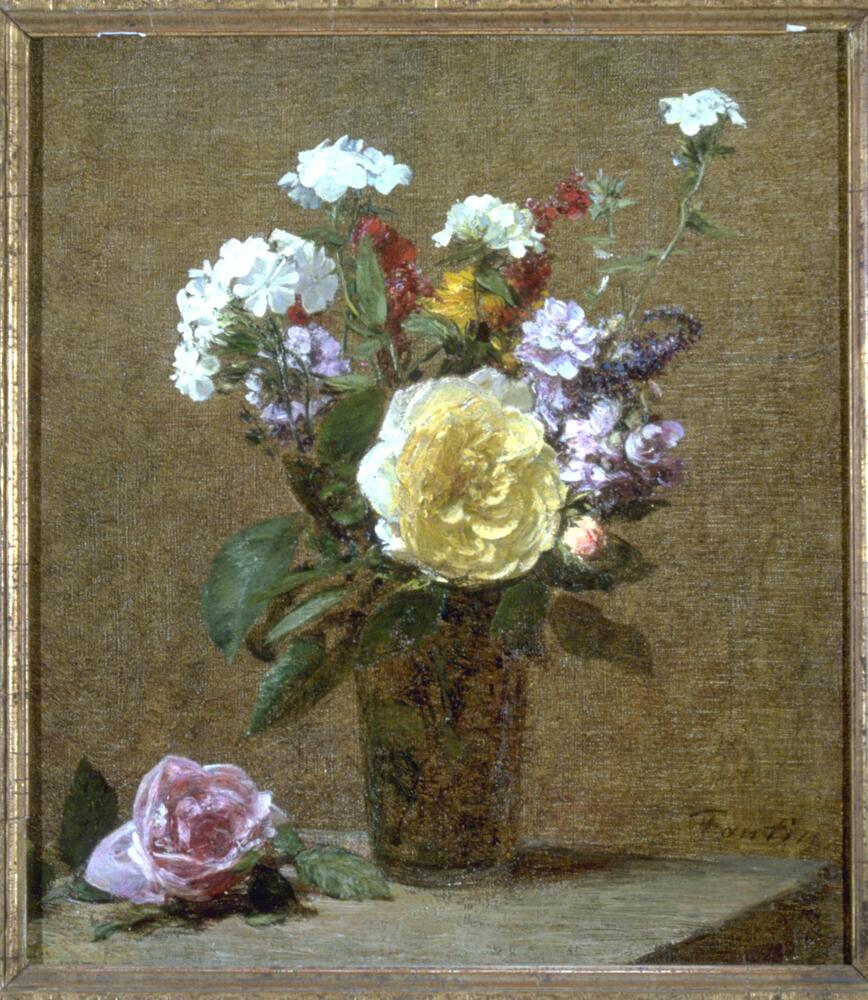Essay: Fantin-Latour
Background
Henri Fantin-Latour, best known for his paintings of flowers and still-lifes, had a decidedly aesthetic approach to art: art should be beautiful. Inspired by the old masters, Fantin-Latour meticulously recreated the light and depth of color. One of the most popular artists of his day, Fantin-Latour is remembered for his stunningly balanced and musical paintings.
Fantin-Latour was born in France in 1836. He began his studies in the visual arts with his father before spending a probationary year at the prestigious École des Beaux Arts on Paris’ left bank. In 1853, at the age of 17 and having dropped out of the École, Fantin-Latour began to work in the halls of the world famous Louvre. He worked diligently to reproduce the works of the great Venetian colorist masters and early nineteenth century genre painters, particularly Titian, Veronese, and Delacroix. He admired these artists’ ability to handle light and model seemingly three-dimensional forms on a flat surface.
Throughout his life, Fantin-Latour lived primarily in Paris and rarely left the city. After meeting fellow artist James McNeill Whistler, however, he decided to travel with him to Britain. There, he met Mr. and Mrs. Edwin Edwards, who commissioned several floral still lifes and helped him gain recognition as a respectable painter.
Fantin-Latour thought of his still lifes as exercises and a means to end. He could make money off of these paintings so he could paint in the way he really desired: the historicized classical style. Though he made his money painting nature, he rarely painted in the outdoors, citing that the old masters never did landscapes. Toward the end of his life, Fantin-Latour moved to Buré, a small town in French countryside of Basse-Normandie, where he painted flowers prolifically until his death in 1904.
Object Information: Fantin-Latour’s Still-lifes
In typical Fantin-Latour style, this painting aestheticizes the beauty of the flowers. Fantin-Latour toys with the falling of light to create a fully three-dimensional depiction. The muted background is overshadowed by the bright bouquet. . Unlike Dutch still lifes, whose objects may have specific symbolic meanings (such as Willem Claesz’s Vanitas, which is in the UMMA collection), this painting exists solely as an object of beauty and contemplation.
Technique and Style
Fantin-Latour applies layers of glaze to create rich, lustrous surfaces. The composition features a distinct diagonal from the top right corner to the bottom left: the tall stem that extends to the fallen bloom in the lower left-hand corner. Fantin-Latour creates beauty through his treatment of the subject matter and the compostion.
Fantin-Latour is known for his skilled depiction of light and color. Although friends with Manet, Degas, and Whistler, Fantin-Latour was really a classicist colorist painter at heart. Unlike the Impressionists, whose style of painting was inspired by their subjects, he believed that technique had to be separated from subject.
Fantin-Latour was also interested in the relationship between music and art. He was inspired by contemporaneous music, particularly that of Berlioz and Wagner, and created illustrations of their operas to try to capture the movement of sound that he heard in their work. Like music, color was a language in its own right, inexpressible through words. The work Fantin-Latour did after the operas, such as Berlioz’s Requiem or Tanhäuser, was some of the only improvisational work he completed.
Themes and Ideas for Teaching
- Henri Fantin-Latour painted alongside some of the most well known Impressionist painters. How might friendships between artists have influenced their work? Is there anything “Impressionist” in Roses and Flowers in a Glass?
- Is art for the sake of art revolutionary? Where does Fantin-Latour fit into this debate?
- Several paintings in UMMA’s collection come from Margaret Watson Parker. What connections are there between them, if any?
Sources
Eighty Works in the Collection of the University of Michigan Museum of Art: A Handbook. Ann Arbor, Michigan: The University of Michigan, 1979.
“Fantin-Latour” Grove Art Online. Oxford University Press, http://www.groveart.com.
“Henri Fantin-Latour. Encyclopedia Brittanica. Accessed Feb. 5, 2018. https://www.britannica.com/biography/Henri-Fantin-Latour
Lucie-Smith, Edward. Fantin-Latour. Oxford: Phaidon, 1977.
Smith College Museum of Art. Henri Fantin-Latour, 1836-1904; an exhibition. Northampton, Mass., 1966.
Trapp, Frank Anderson. “Fantin-Latour at Smith College.” The Burlington Magazine 108, no. 760 (July 1966): 393-394.
Jane Braun (2007)
Eva Caston (2018)
Created For
K-12 EducatorK-12 Student
Museum Visitor
UMMA Docent
UMMA Staff
University Faculty
University Student
Rate this Resource
AVG: 0 | Ratings: 0
& Author Notes
Creative Commons by-nc-saLast Updated
April 16, 2018 3:27 p.m.Report
Reporting Policy
